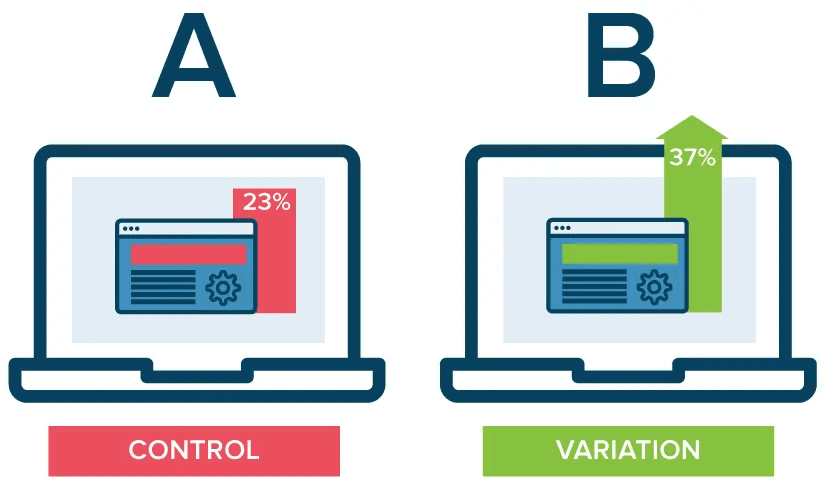How would you rate your brand’s social media maturity?
If you’re unsure how to answer that question, this article is for you. We’ll explore what social media maturity is as well as a few of the key qualities that contribute to it. And most of all, we’ll be looking at how a focus on generating and applying data-driven insights can have a huge impact on the level of social media maturity a brand can be said to have. We’ll also look at a few tips for giving yours a boost.
Ready? Let’s get going.
What is social media maturity?
The concept of social media maturity is used to gauge how far a company or brand has mastered the art of leveraging social media to achieve its business goals.
We’ve all seen them – companies that somehow seem to get it right every time. The true masters of the social media craft will not only manage to raise a smile with humorous memes on X or TikTok, but also be on the ball when it comes to more serious interactions like responding to customer queries across multiple social platforms.
But not all companies are quite there yet. Social media marketing is a complex pursuit, and building that level of social media expertise takes time and effort. Most companies are still working toward that ultimate goal.
The typical social media maturity model divides companies and brands into several categories depending on how far they’ve managed to advance toward that goal. Here, we’ll break it down into four.

Free to use image sourced from Unsplash
Stage 1: beginner
We’ve all got to start somewhere. Unless your company has a full team of social experts ready to hit the ground running on day 1, your brand’s first foray into social media is likely to be on the modest side. At the beginner stage, most brands:
- Have a few social media accounts without much content on them
- Only have one or two employees responsible for managing these accounts
- Leave these employees to post reactively whenever the mood strikes them
- Have no cohesive overarching social strategy
Stage 2: basic
At the basic level, some kind of strategy is beginning to emerge, although it might not be fully formed as yet. There’s an acknowledgment that social media impressions and engagement are crucial for brand awareness, although the management of social media accounts hasn’t been integrated to align with broader business goals. At the basic level, most brands:
- Are beginning to post on social media on a more regular basis
- Have a larger team responsible for developing social strategy and implementing it
- Are starting to look for ways to integrate social media into other operations
Stage 3: intermediate
Once a company has established a robust social media strategy, it can be considered to have reached an intermediate level of social media maturity. It’s fully active on its social accounts, having a dedicated team to manage them and post on them regularly following a detailed content calendar. At this stage, most brands:
- Have aligned their social strategy across all teams (e.g. sales, customer support)
- Are beginning to experiment with new social channels and techniques
- Are leveraging data-driven insights to create targeted social campaigns
Stage 4: advanced
The ultimate goal for any brand is to reach an advanced level of social media maturity. There’s full buy-in to prioritizing social at all levels of seniority and across all departments. From sales agents to market researchers to data teams, everyone maintains a social-first mindset. At this stage, most brands:
- Run multiple highly active social accounts that are widely followed
- Are well-known in their field for being innovators in the social arena
- Have well-integrated processes that ensure efficiency in social-related workflows
- Incorporate robust contract management systems to align with social media strategies, enhancing legal compliance and streamlining collaborations

Free to use image sourced from Unsplash
Which characteristics define social media maturity?
So, those are the categories, but what specific aspects of a brand’s operations define which of those categories it inhabits? Here are a few of the most important ones.
Strategic framework
One thing you’ll notice about brands at the advanced level is that they’ve developed a sophisticated strategic framework for their social operations. This means they base every decision on data and have mapped out exactly how to use social media to achieve their overall business goals.
The main aim should be to ensure this framework is rolled out across the organization as a whole. This is the best way of guaranteeing alignment between departments.
Overall coordination
This strategic alignment is one example of how you achieve a well-coordinated strategy, but it’s vital this happens at a day-to-day level too. That’s to say, all departments need to be able to collaborate seamlessly rather than just focusing on their own social media tasks.
For instance, your content team may be posting regularly on social accounts, but is anyone monitoring responses? Some customers may try responding to a post to attract the attention of your customer service team, looking for assistance with an issue. Do you have a handover protocol in place to make sure their queries are addressed quickly?
Degree of buy-in
Having a social media team that’s fenced off from the rest of the company and simply expected to “get on with it” is a sure-fire sign of a lack of social media maturity. It’s also a missed opportunity.
The level of buy-in from everyone in the company is indicative of how committed a brand is to social media as a strategy for business growth. To really make the most of everything that social offers, everyone from the CEO to the most recently arrived intern has to commit to making it a priority.

Free to use image sourced from Unsplash
Levels of investment
Making social a priority means investing in it, of course. This means there should be a dedicated social media budget to cover everything from hiring skilled experts to funding an enterprise architecture management EAM review to establish how best to integrate and optimize social tools into the company’s existing tech stack.
One critical component of this tech stack is creative automation, which streamlines content creation and distribution, ensuring consistent and engaging posts across all platforms. This approach not only enhances efficiency but also allows your team to focus more on strategic initiatives and innovation.
It’s not just about financial investment, either. There’s also the question of investing time in training and education about all aspects of social and how it fits into the wider business strategy.
The importance of data in establishing social media maturity
Few senior managers would disagree that implementing a data-driven marketing strategy is beneficial for their business. However, not all place as much importance on data in the context of social media.
But the truth is, examining data is all about generating insights. And when it comes to social media, those insights can help your business in a number of ways:
- Tailoring your social media messaging to different platforms
- Understanding how to engage with different segments of your social media audience
- Identifying emerging social trends so your brand can get ahead of the curve
- Spotting new opportunities early to steal a march on the competition
In other words, just as with marketing in general, so you can discern how effective a brand is in social by how well it uses data to inform its strategy.
With that in mind, let’s take a more detailed look at how you too can make the most of data to level up your social media game.
5 ways to use data to transform your social media maturity
What you want are some practical steps, right? Well, here we are: five of the most effective ways of using data to upgrade your brand’s social media performance.

Free to use image sourced from Unsplash
1. Decide which social media metrics to monitor
First, select the basic social media metrics you’re going to track. This creates a robust foundation for improvement, and gives you a concrete method of monitoring progress. The exact mixture of metrics you choose will vary depending on your overall goals, but common examples include:
- Engagement rate: the number of comments, reactions and shares your posts get as a percentage of your audience
- Virality rate: the number of shares a post gets expressed as a percentage of the number of impressions it gets
- Amplification rate: the number of shares each post gets as a percentage of the total number of account followers
- Reach: the total number of people who see your content
There are many other options, but you get the picture. To start with, focus on a few core metrics and aim to optimize them.
2. Invest in appropriate tools
Forward-thinking companies invest in new tools all the time, and in the modern business environment, there’s a movement toward an ever-increasing focus on digital efficiency. For instance, one of the reasons many traditional communications systems have been replaced by PBX cloud solutions is that they’re much more flexible and easier to integrate with other systems.
Similarly, you need to equip your teams with social tools that help boost collaboration and productivity. Modern social tools not only help you create and plan content, but also analyze how well that content is performing, as well as monitor audience engagement.
3. Develop a focus on social intelligence
Social intelligence is a term used to describe a more in-depth approach to social media analytics. It’s about gathering and analyzing a wide variety of data and applying it to your decision-making.

Free to use image sourced from Unsplash
Big data is the name of the game here. Social intelligence isn’t just about tracking basic metrics, but identifying trends across a wide variety of platforms. To this end, it often involves the use of cutting-edge technology like machine learning algorithms to pick up subtle patterns.
For many companies, this breaks new ground. It’s often worth carrying out capability modeling as a first step to establish how ready your company is to undertake a project of this scale, and what additional resources you’ll need before you begin.
4. Try analyzing more advanced metrics
Even if you’re not ready to go all-in on social intelligence monitoring, your company can still benefit hugely from adding a few more advanced metrics into the mix once you’re used to tracking the basics.
One key area of importance is finding ways to determine the impact of your social activity on the bottom line. That means joining the dots between your basic social media metrics and things like the number of sales leads you’re achieving or overall revenue.
This might seem tricky – and it can be. Luckily, there are plenty of more advanced social media tools out there that can help you nail down this kind of association. Over time, you’ll be able to build up a more nuanced picture of how effective each element of your social strategy is and how they’re contributing to business growth.
5. A/B testing content
Sometimes, the simplest approaches can be the most effective, and that’s certainly true of A/B testing. If you’re not familiar with the concept, it simply means trying out two different versions of something within a controlled environment to see which one performs better.
It’s as straightforward as data gets. And it’s simplicity itself to apply it to social media content. You just create two different versions of a post and try them both out, then see which gets more engagement.

Image sourced from Optimizely
The only slight complication is that it’s important that the context for each has to be the same, so the comparison is fair. This means it won’t work if you, say, share the same post on two different platforms (since the demographics of the audiences will be different).
The right approach is to split your audience into two groups and then post one version to each group. Remember that only one element of the posts should be different – for instance, you could post one with an image and one without, while keeping the rest of the content the same – otherwise you won’t know which aspect of the more successful post helped it win.
Key takeaways for Social Media Maturity
Never underestimate the power of data to transform your brand’s social media experience. From the smallest startup to the biggest multinational, every business can benefit from exploring new ways to incorporate data-driven insights into their social media strategy.
The very nature of social is that it’s always evolving, so change is the only constant. In some ways, this can make mastering it seem like an intimidating challenge – but it also presents excellent opportunities for brands that are prepared to invest the time and money into developing a more sophisticated approach to social.
Remember – take it one step at a time. Achieving an advanced level of social media maturity won’t happen overnight. But with a little planning, a push for inter-team collaboration, and – of course – a focus on generating and applying data-driven insights, there’s no reason your brand shouldn’t become an absolute social media star.

